Company History of Nursing Bottle
-
1940s
-
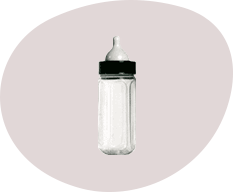
1949
- Doufu-Boueki, the predecessor of Pigeon Corporation, was established. First nursing bottle (A-type) with a wide neck was introduced in Japan. This pioneering design was more hygienic than previous bottles with a connected nipple.
-
-
0s
-
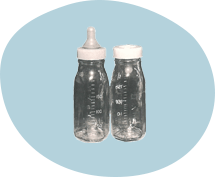
1950
- A-type nursing bottle — prototype of the current design — was introduced.
-
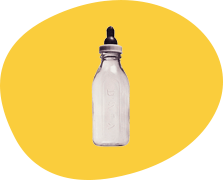
1952
- B-type nursing bottle with a narrow neck was introduced.
-
1953
- C-type improved nursing bottle with a connected nipple was introduced.
-
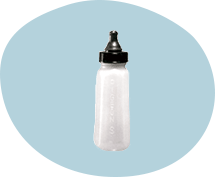
1954
-
S-type polyethylene nursing bottle was introduced in Japan. The hexagonal shape not only
helped
babies grasp it easily but the new material also brought dramatic product improvements.
-
S-type polyethylene nursing bottle was introduced in Japan. The hexagonal shape not only
helped
babies grasp it easily but the new material also brought dramatic product improvements.
-
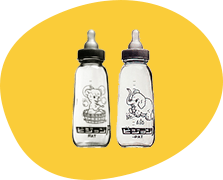
1956
- The F-type nursing bottle, which was small and even suitable for fruit juice, was introduced.
-
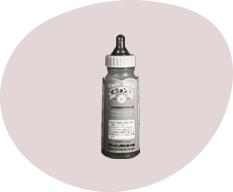
1957
-
Pigeon Corporation was established.
L-type high-density polyethylene nursing bottle was introduced. This was designed to withstand boiling during sterilization, a weakness of traditional bottles.
-
Pigeon Corporation was established.
-
1959
- The H-4-type and H7-type nursing bottles, both with narrow necks and directly attached nipples, were introduced.
- The H-4-type nursing bottle was used at the Japan Red Cross Hospital, which was an important first step in the eventual widespread use of nursing bottles at hospitals and maternity hospitals.
-
-
0s
-
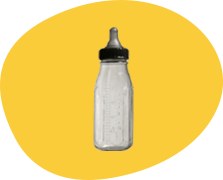
1960
- AN-type polyamide (nylon resin) nursing bottle was introduced.
- A-D silicone nipple was introduced.
- Isoprene rubber nipple, which resists wear compared with natural rubber, was introduced.
-
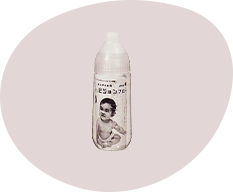
1962
- Polycarbonate (PC) nursing bottle was introduced. Made to withstand sterilization, this tough, transparent, and lightweight design fulfilled all requirements for nursing bottles.
- R-8-type nursing bottle was awarded the Tokyo Invention Prize, and was recommended by Japan Red Cross Hospital.
-
1964
- A-type glass nursing bottle was introduced, becoming a best-selling product for 15 years.
-
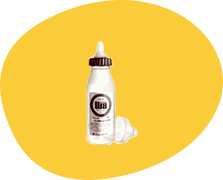
1965
- W-8-type nursing bottle was introduced. Thanks to improved bottle-mouth molding, the bottle's flat mouth inner surface simplified cleaning for enhanced hygiene.
-
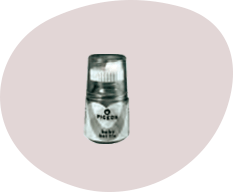
1966
- Exporting to global markets started.
-
1967
- Nursing bottle with a cap was approved by the Japanese Industrial Standards Committee and awarded the JIS Mark.
-
1968
- Pigeon's market share for nursing bottles in Japan reached 80%.
-
-
0s
-
1977
- P-type nursing bottle was introduced. This was specially designed for proper feeding of babies with a cleft palate or inadequate sucking strength.
-
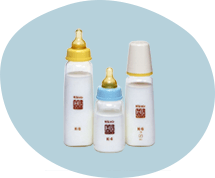
1979
- K-type nursing bottle was introduced. With its wide-end and rounded-corner square-bottom design, this uniquely stable shape was easy to hold and keep clean, and also simplified formula mixing.
-
-
0s
-
1988
- Pigeon Basic Research group identified peristaltic motion in baby's natural sucking action. This research has contributed many studies of infant growth to pediatric healthcare institutions, etc.
-
-
0s
-
1991
- Nursing bottle and nipple (Bonyu-soudan-shitsu) were introduced to promote education in breastfeeding.
-
1997
- Concern about endocrine-disrupting chemicals in the environment led to media focus on polycarbonate (PC) nursing bottles.
-
1999
- Glass nursing bottle sales shipments rose to 80% of market share.
-
-
0s
-
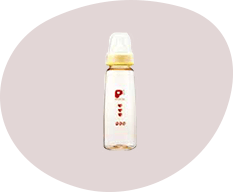
2000
- Five major manufacturers prepared and presented guidelines for safe use of polycarbonate (PC) nursing bottles.
- Polyethersulphone (PES) nursing bottle was introduced.
-
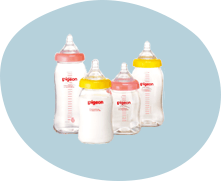
2002
- Based on extensive research in breastfeeding, a nursing bottle (Bonyu-jikkan) with a soft, elastic, flexible nipple was introduced. This helped babies to open their mouths wide and supported natural sucking action.
-
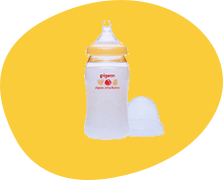
2003
- Polyethersulphone (PES) nursing bottle (Bonyu-jikkan) was introduced. This lightweight bottle design allowed convenient portability.
-
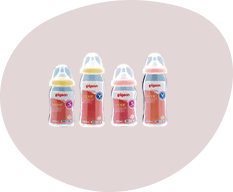
2007
- Polyphenylsulphone (PPSU) nursing bottle (Bonyu-jikkan) and nipples in four sizes were introduced.
-
-
0s
-
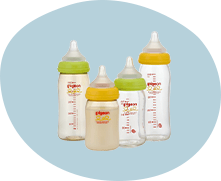
2010
- A new version of our nursing bottle (Bonyu-jikkan), which was designed to enable seamless switch between breast and bottle.
- To meet our aim of faithfully replicating the important movements that occur during attachment, sucking, and swallowing, the bottle was redesigned with new materials.
-
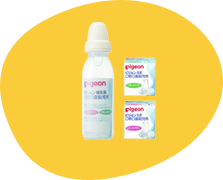
2012
- The P-type nursing bottle was redesigned with a focus on ease of use.
- To accommodate the mouths of babies with a cleft lip and cleft palate, the nipple had a redesigned shape and was made with new material. In addition, the available sizes were increased to 2.
- The bottle’s new material was soft, allowing it to be squeezed to support babies with weak sucking.
-
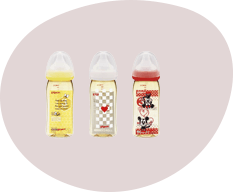
2013
- New designs of our specially decorated nursing bottles (Bonyu-jikkan) were introduced.
- Based on trends found from conducting customer surveys and analysis, three different designs for the decorative versions of our nursing bottle (Bonyu-jikkan) were added. Since then, the bottle’s designs have changed in accordance with current trends.
-
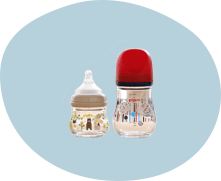
2017
- A new nursing bottle (Bonyu-jikkan my Precious) was introduced.
- The bottle was designed with a round shape that made it easy to comfortable hold, and a previously compact 80 ml size, which was designed to suit the amount newborns drink, was added.
- It received the 2017 Good Design Award.
- We also added a nursing bottle nipple in size LL for parents who want to continue giving breastmilk to their babies for a long time, even after they have started eating baby food.
-
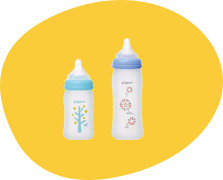
2018
- A coated nursing bottle (Bonyu-jikkan Coating) was introduced.
- The glass nursing bottle was developed with a silicon coating that gave it a new texture.
- The thin silicone coating increased the safety of the glass bottle by reducing the possibility that glass shards would fly if the bottle broke.
-
- Home
- ABOUT PIGEON
- Company History
- Company History of Nursing Bottle

